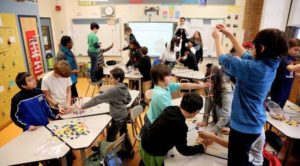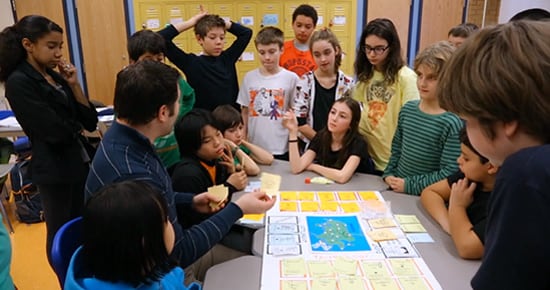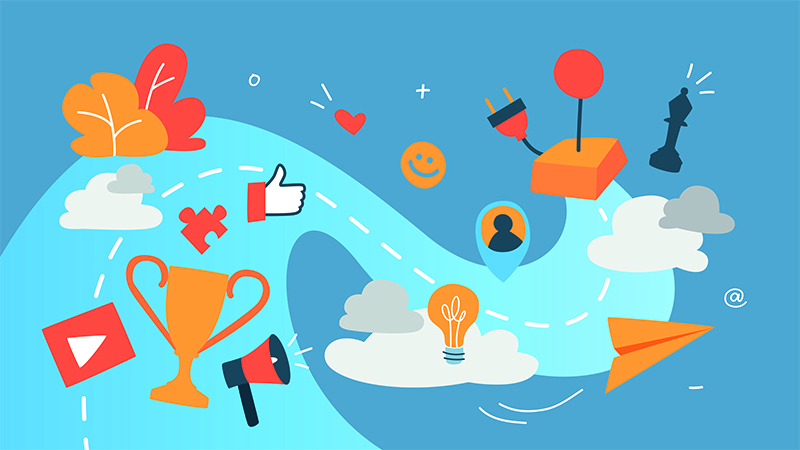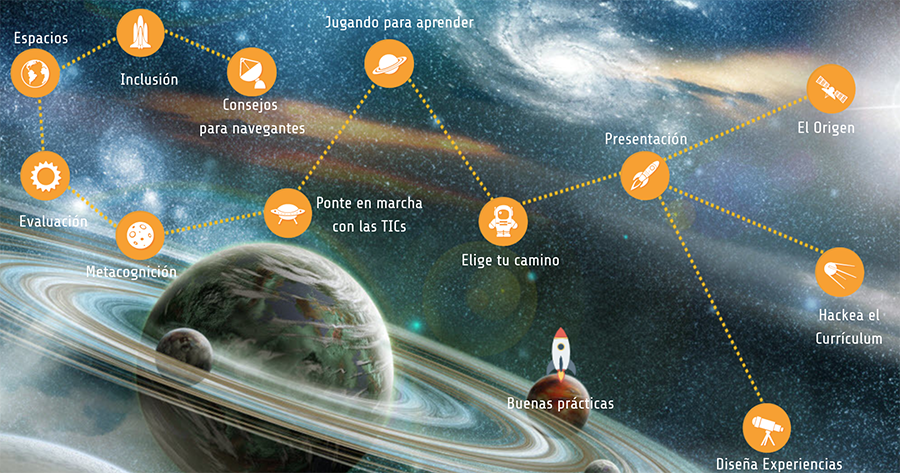Throughout our childhood, we comprehend the world thanks to play. Play is a characteristic and unique form whereby human beings are socialised, assimilate and transform reality. Moreover, play is stimulating, entertaining, exciting, and motivating. It calls for concentration, social, cognitive and emotional skills and a high level of processing. Play is fun and enriching, but it is not banal: the learning that emerges from play is learning in its pure state. This is the basis of gamification, a growing trend in education, which leverages the elements of play to apply them to education and make learning a memorable experience.
Quest to Learn is a public school in the city of New York that has integrated the principles of gamification in the learning and teaching of students and teachers on a day-to-day basis, transforming the classrooms into a vibrant community of discovery, motivation, teams and investigation, where students interact with the curricular content, facing challenges and levels while at the same time learning by investigating thanks to the collaboration of teachers, families, videogame designers and educators. We explain how it works in this article.
Play is fun and enriching, but it is not banal: the learning that emerges from play is learning in its pure state.
When learning is an exciting game

The aim of Quest to Learn is, as we have explained, to integrate the active and motivating principles of play in a systematic way that is coherent with the curriculum and the pedagogy that, day after day, are developed in the classrooms of the whole school. However, the teachers and students of Quest to Learn do not work with any curricular content that differs from any other official school in the United States. What they do is redefine the goal and pedagogical strategies that schools implement, using the principles of gamification to do so. And that is the secret of their success. The appeal of the Quest to Learn curriculum is similar to that of a well-designed game: it requires participation and interaction, and offers immediate feedback. The challenge is a constant one and learning is achieved as much through failure as it is through success.
The teachers and program designers have created a learning setting in which students participate in an active way. They also have the opportunity to choose learning pathways and levels, and are encouraged to use critical cognitive strategies to approach the content. What’s more, they work in teams with roles assigned in the creative projects of different kinds. All of this is aligned with the official standards.
What does gaming bring to learning? Educator and game designer Katie Salen, who participated in the design and launch of Quest to Learn, sums it up like this:
- The possibility of adopting different identities and roles for learning, such as writer, teacher, researcher, artist or learner.
- The creation of a real and meaningful context, connected with real life, in which students can apply the knowledge acquired.
- The integration of operational and metacognitive thinking strategies.
- Formulating hypotheses and practice, being allowed to fail, try again and learn from one’s mistakes.
- The direct connection with the students’ enthusiasm and curiosity, addressing their learning needs.
- The fostering of social relations and teamwork.
- The stimulation of experimentation, imagination, creativity and invention.
All these aspects of gaming enrich the learning process and make it a motivating experience for the students.
The appeal of the Quest to Learn curriculum is similar to that of a well-designed game: it requires participation and interaction, and offers immediate feedback. The challenge is constant and learning is achieved through failure as well as success.
From “maths” to “how things work”
In “Quest to Learn”, students don’t study mathematics, English language or music. They don’t even study programming. Instead, they study “How things work”, the equivalent to conventional mathematics, or “Sports for the mind”, which represents the multimedia arts. These are some of the system modules:
- Home Base: a moment at the beginning and end of each day when the students review their avatar and road map with a teacher to share their achievements and needs. They organise into teams of ten, where they take care of and advise one another.
- Discovery missions: these last for ten weeks. During this time, they work on the curricular content of several areas in a single project, but it’s designed with a special focus on play and technology. The activities are divided into levels; points (scores) are won and insignias, there are different narrative routes to choose from and increase the difficulty, step by step.
- Missions Annex: a time focused on the subject areas of language and mathematics with the aim of tackling the most difficult challenges of each Mission. It also helps the teachers adapt to the needs of those teams that need special attention. They take place over a three-hour period each week.
- Special missions: in which the students decide which contents to work on for one hour per day. They can also make presentations to classmates or design and activity on a topic of their choice.
- Boss Level:the final level, which extends over two weeks, normally at the end of each trimester. In this time, the students work on a project in teams to demonstrate mastery of the competencies developed in each mission, but at a higher level of difficulty. At a Boss Level, one learns by following a rigorous process of research, constructing a theory, a hypothesis, developing prototypes, continuous assessment and a final presentation with advice between students and teachers.
- XPods or elective courses: these change from one year to the next. External professionals are invited to the school, who share the missions with teachers and students. For example, in the “Masterchef” course, the students have to design a menu for the school based on the agriculture in the area. To achieve this, first of all they will have to understand where foods come from and make the right decisions about which products to use at each time of year. In the last two weeks, the students will take charge of the menus for the whole school, calculating the costs and applying contents of maths and natural sciences. In the course “The Wireless Imagination”, they encouraged to create a radio programme. But since the first thing they need is an antenna, the participants will learn how electricity works, they will build their own pirate station and get it working to record and broadcast their programmes and podcasts.
In terms of its results, according to a study that the Institute of Play (one of its promoting bodies) commissioned to Florida State University, the students of this learning system displayed significant advances in comparison with their peers in skills related to systematic thinking. They also improved, albeit not significantly, in their time management skills and teamwork.
Playing is fun and exciting, and the people at Quest to Learn know it. Games motivate you, challenge you and keep your attention. Harnessing these elements of gaming and applying them to education to make learning a memorable experience has been a growing trend in recent years. Although it is true that more evidence is needed of its effectiveness in classrooms, what is clear is that it boosts student motivation and this in turn improves the learning results. Having fun while learning can’t be a bad thing. Let us apply the principles of play to education with a cool head and evidence.






